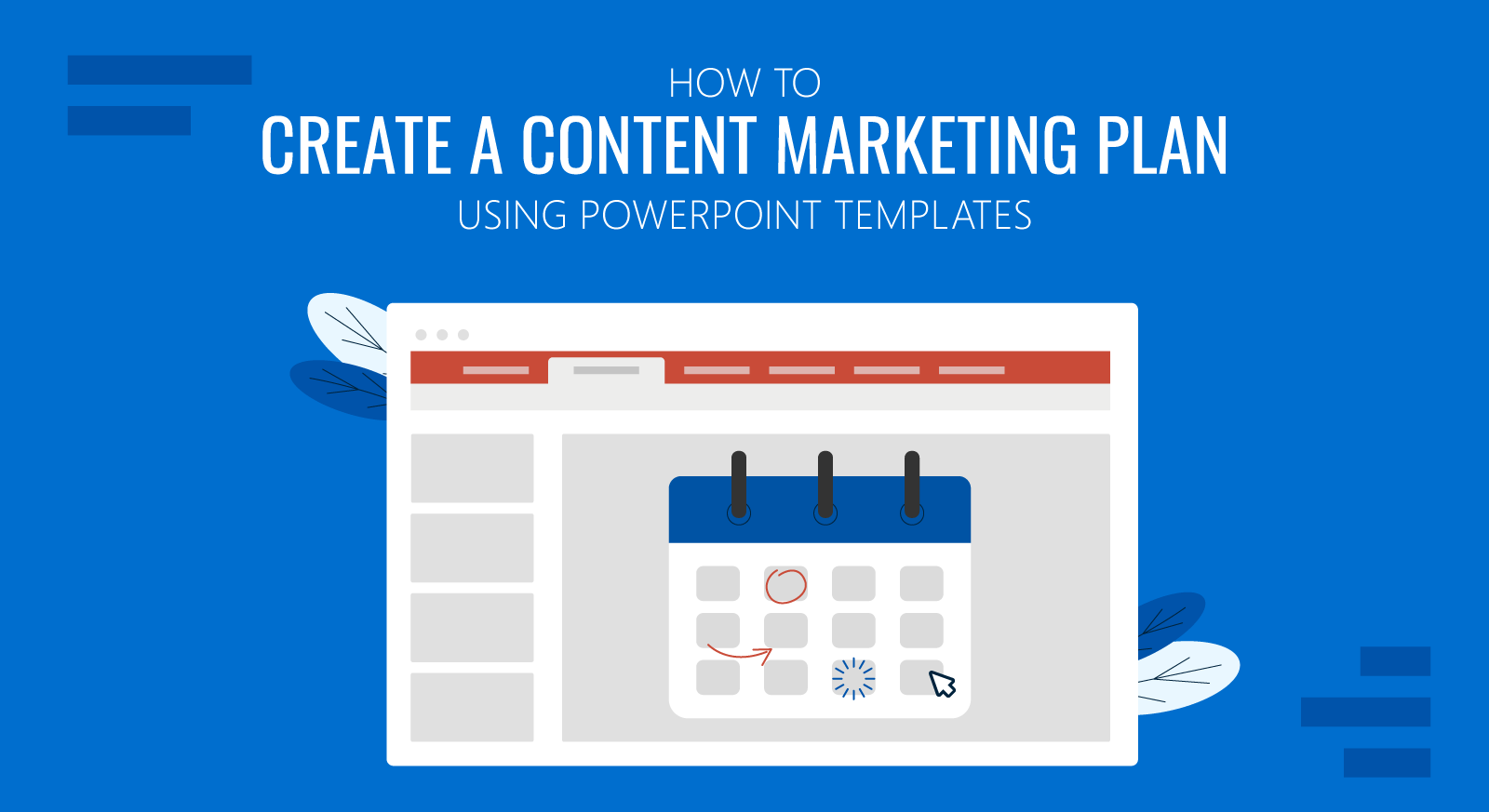
In the last year the changes within the internet marketing space (SEO, SEM, Social Media and PR) have forced the Marketing Agencies, Consultants, Startups and Corporate Marketing areas to drive focus to their Inbound Marketing. In this post we will guide you for the initial steps any Marketing area, startup or even consolidated corporate Marketing Agency should follow for the creation of a Content Marketing Plan.
- What is Inbound Marketing?
- How to Start with Inbound Marketing?
- Content Marketing Plan for Inbound Marketing
- Content SWOT Analysis
- Define Content Marketing Objectives and Key Performance Indicators (KPI’s)
- Assets Analysis with Content Marketing Matrix and Content Marketing Media Matrix
- Create The Content Marketing Plan Roadmap
- Conclusions
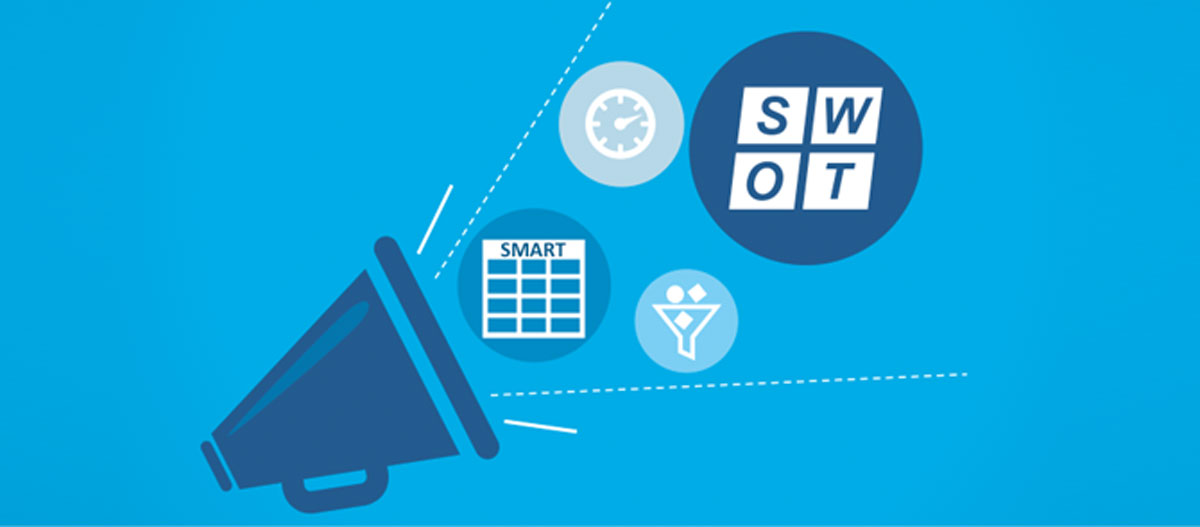
What is Inbound Marketing?
Inbound Marketing is the combined effort of promotion (of a company, brand, product, service, etc.) through different internet channels (ebooks, blogs, podcasts, videos, newsletters, SEO, social media marketing, and other content channels), which help to attract customers. Inbound marketing focuses on bringing customers onto the website instead of the marketer going to search for possible customers. The inbound marketing mantra is to earn the customer instead of buying the customer.
How to Start with Inbound Marketing?
In order to be successful in Inbound Marketing, companies need to invest in content, which is the pushing force for Inbound Marketing campaigns. The amount of content (not only content generated by humans but also AI content generated) by companies is increasing dramatically, and consumers are receiving thousands of marketing messages in all of their internet channels. Said this, it is extremely important to plan the content marketing efforts in order to effectively reach the right audiences, add value to them and receive, in exchange, their loyalty and their business. Tied with the effectiveness, the ability to measure it is necessary in order to gather data, calculate the Return on Investment (ROI) and be able to iterate the process with more information that will help to improve the content and its reach.
Content Marketing Plan for Inbound Marketing
Content planning is one of the key success factors for an effective and efficient Inbound Marketing Campaign. We will describe a simple four steps process combining general knowledge of business and marketing tools that will help you trace the path of your content strategy. The management tools described apply to every planning activity, and the value is not only driven through the final work product but for the process itself. SlideModel provides a set of Professional PowerPoint Templates where the users can edit the placeholders and iterate over the management tools through the analysis process.
The process and management tools we will describe in this post are the following:
- Analysis of your current and past marketing efforts through the use of the SWOT tool.
- Definition of clear objectives and how to measure them in order to build SMART KPIs.
- Brainstorm ideas for content, matching them to the stages in the buying life cycle (FUNNEL).
- Create a Plan (Tasks, Resources, Duration) with a PowerPoint Timeline.
Content SWOT Analysis
What is SWOT?
SWOT is a popular analysis and decision-making management tool. The word is the acronym for Strengths, Weaknesses, Opportunities, and Threats. SWOT analysis is helpful for understanding a current situation and being able to create a positive strategy. The tool framework is very simple, it consists of a 2×2 matrix (4 quadrants), where each cell represents one of the components of the SWOT acronym. This matrix should be analyzed jointly in order to picture, at the same time, the major components and visualize the relationships.
If you want a deeper understanding of the SWOT Analysis and a practical guide to creating it with professional SWOT PowerPoint Templates, you can review our previous post, “Best SWOT Analysis Templates for PowerPoint.”
Current Content SWOT
The Content Analysis starts with a simple exercise; present the 5 major strategic strengths and weaknesses of your current content marketing efforts. It could be difficult on the first try, but the iterative approach, trying to reach the five points, is vital to analyze your knowledge about the marketplace and environmental situation. In essence, you need to set a title for what is working well and what is not working. This deep thinking will trigger in the analyst or group of analysts several leverages that will allow fresh ideas in future steps of the process.
Our Customers are used to working with remote teams, and having PowerPoint Templates as the canvas for working through shared environments is ideal. You can use some tips on online broadcasting from our previous blog “How To Run PowerPoint Presentations Online“.
Using “virtual” sticky notes in the PowerPoint Slide makes it easy to keep the previous ideas and track the evolution of the SWOT analysis. Also, printing the template in a poster and generating an Agile meeting, working with tangible paper, triggers interactions and creativity; take the suggestion and try it; it has a proven track.
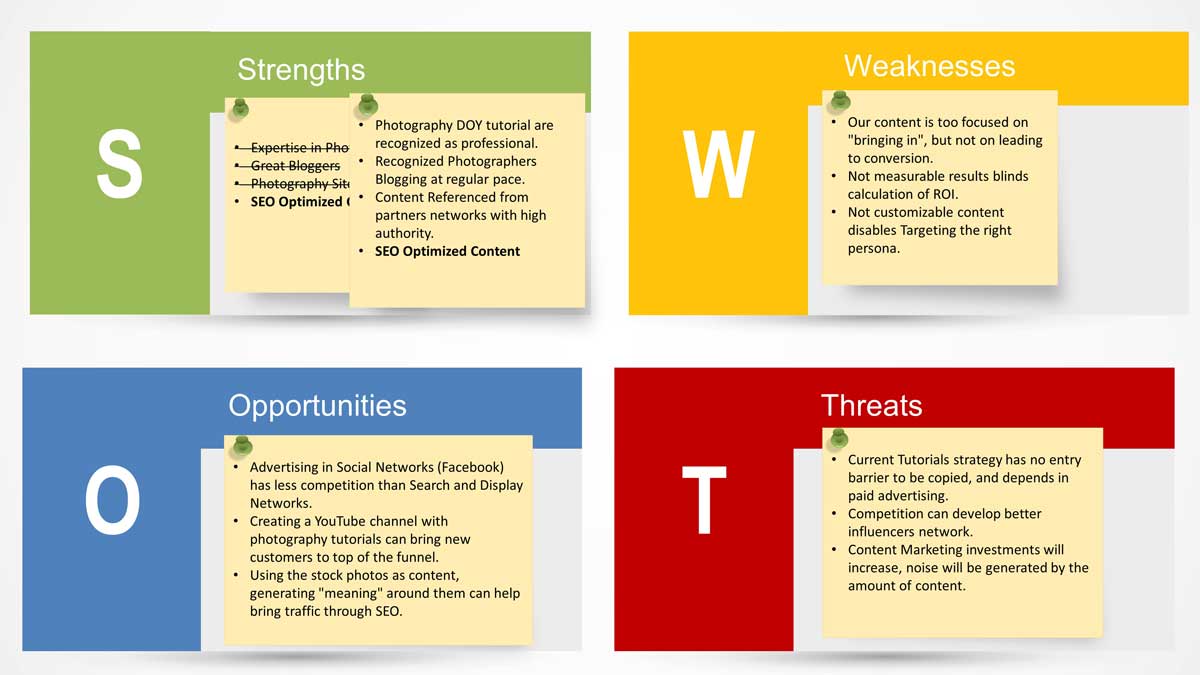
Lets describe an example. Consider the “Stock Photo Business,” where a company sells pictures to its users. The content marketing SWOT could look like this after a couple of iterations. Look at the ideas and their evolution. The team starts to realize the effect of their content strategy. The PowerPoint Template shows in one snapshot the full team ideation and will be extremely easy to showcase later.
Strengths
- Expertise in photography -> Photography DOY tutorials are recognized as professional.
- Great Bloggers -> Recognized Photographers Blogging at a regular pace.
- Photography sites linked -> Content Referenced from partners networks with high authority.
- SEO Optimized Content drives traffic.
Weaknesses
- Our content is too focused on “bringing in” but not on leading to conversion.
- Not measurable results blind calculation of ROI.
- Not customizable content disables Targeting the right persona.
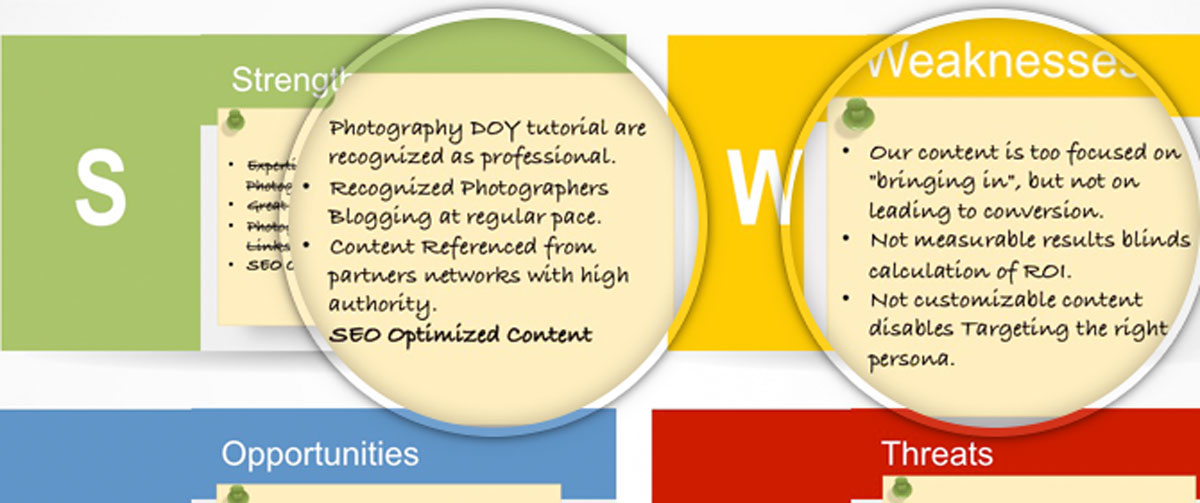
The second step moves to the Opportunities and Threats. At this point, the analysis has traversed the initial iteration that breaks the ice of ideas. Now, strategic thinking flows and opportunities are clearer, and potential threats to them are no anymore hidden.
Opportunities
- Advertising in Social Networks (Facebook) has less competition than Search and Display Networks.
- Creating a Youtube channel with photography tutorials can bring new customers to the top of the funnel.
- Using the stock photos as content and using a photo editing platform to improve them. Generating “meaning” around them can be used as one of the techniques to bring traffic through SEO, or alternatively, hiring a Search Engine Optimization (SEO) services through an agency or SEO professional.
Threats
- Current Tutorials strategy has no entry barrier to be copied and depends on paid advertising.
- Competition can develop a better influencers network.
- Content Marketing investments will increase, and noise will be generated by the amount of content.
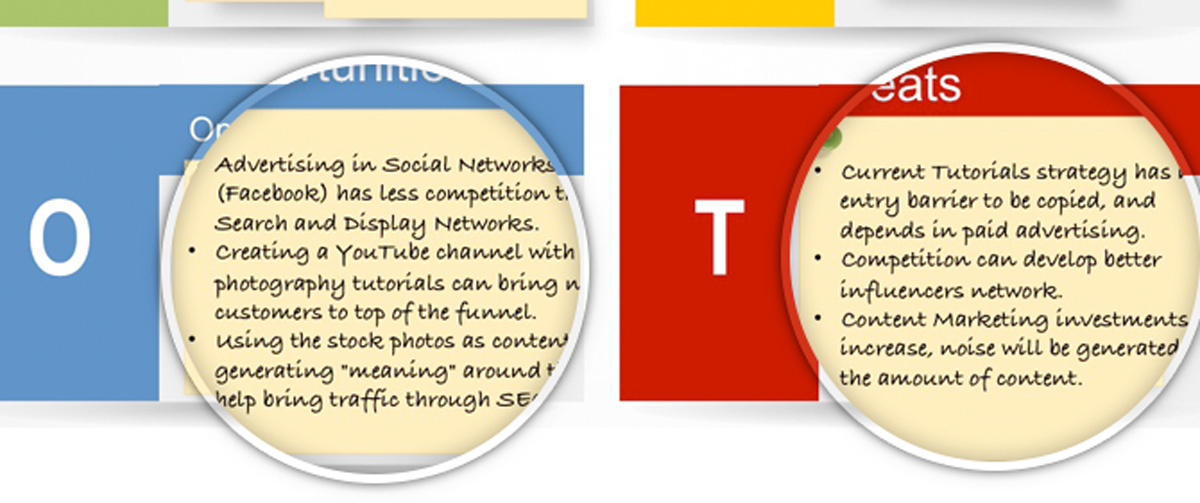
Defining Tactics and Actions over the SWOT
Once the SWOT analysis has concluded, it is time to summarize the exercise and create an actionable plan that takes advantage of it. Empowered by the strengths, taking action over the opportunities, and knowing your weaknesses protect your Content Marketing efforts against threats.
The following example applies to the SWOT Analysis described:
- Change the approach of your Photography tutorials, moving towards Photo Editing in order to create conversions.
- Create a Content ROI system along the funnel, measuring acquisition costs, conversion rates, and the amount spent on content creation, curation, and promotion.
- Test Social Media Advertising of Photography tutorials that had performed well in regular PPC advertising and measure effectiveness and ROI.
- Create a Youtube Channel of free photography tutorials powered by the partner’s network.
- Develop an Affiliate program for Influencers in order to gain fidelity among them.
- Take advantage of Bloggers and technology to help personalize content.
- Consider offloading some of your content marketing responsibilities by outsourcing them to an external SEO agency.
You can use one of our Text & Tables PowerPoint Templates in order to present the plan clearly and visually and add it to your deck.

Each of the sections describes the Actions that the plan will execute. This template allows a clear presentation of the ideas, catalogs them including an Id number, and visually engages the audience with top-of-the-line PowerPoint Icons.
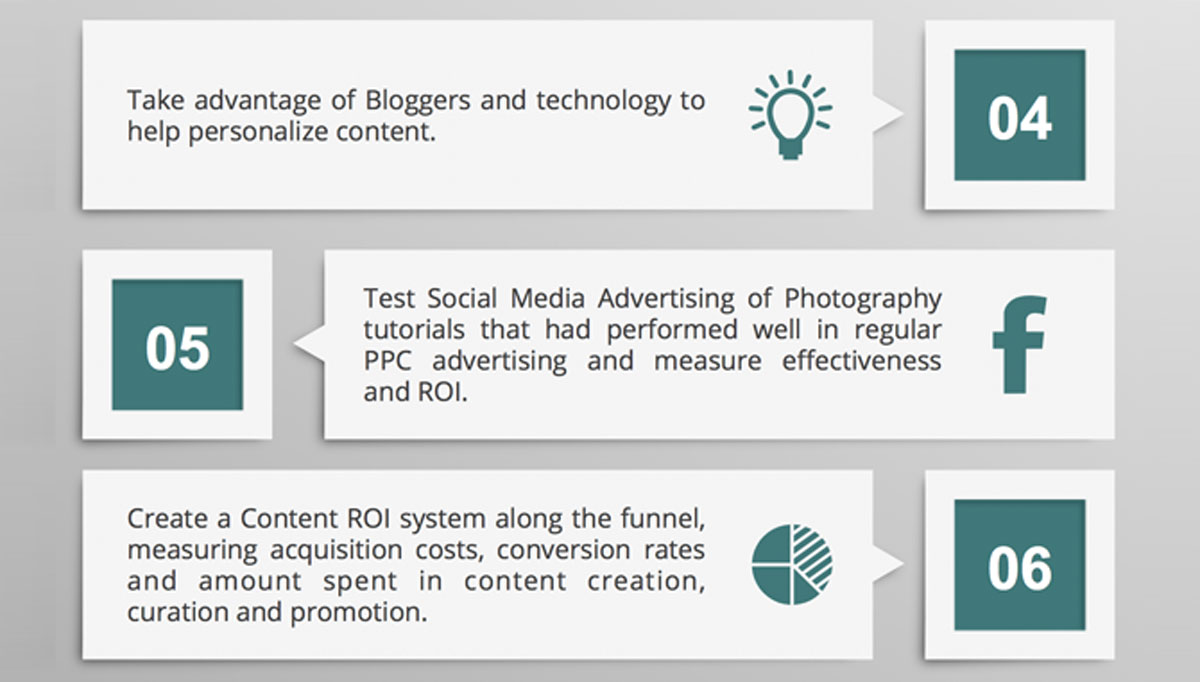
Define Content Marketing Objectives and Key Performance Indicators (KPIs)
After the analysis stage, the next step is to define the objectives that map to the actions described previously. For each objective, it will be defined a key performance indicator (KPI) that will measure the progress toward achieving the objective. This methodology is the basic foundation of the strategic approach to Content Marketing. It will provide visibility in order to understand if the content marketing plan is on track or not.
RACE Framework
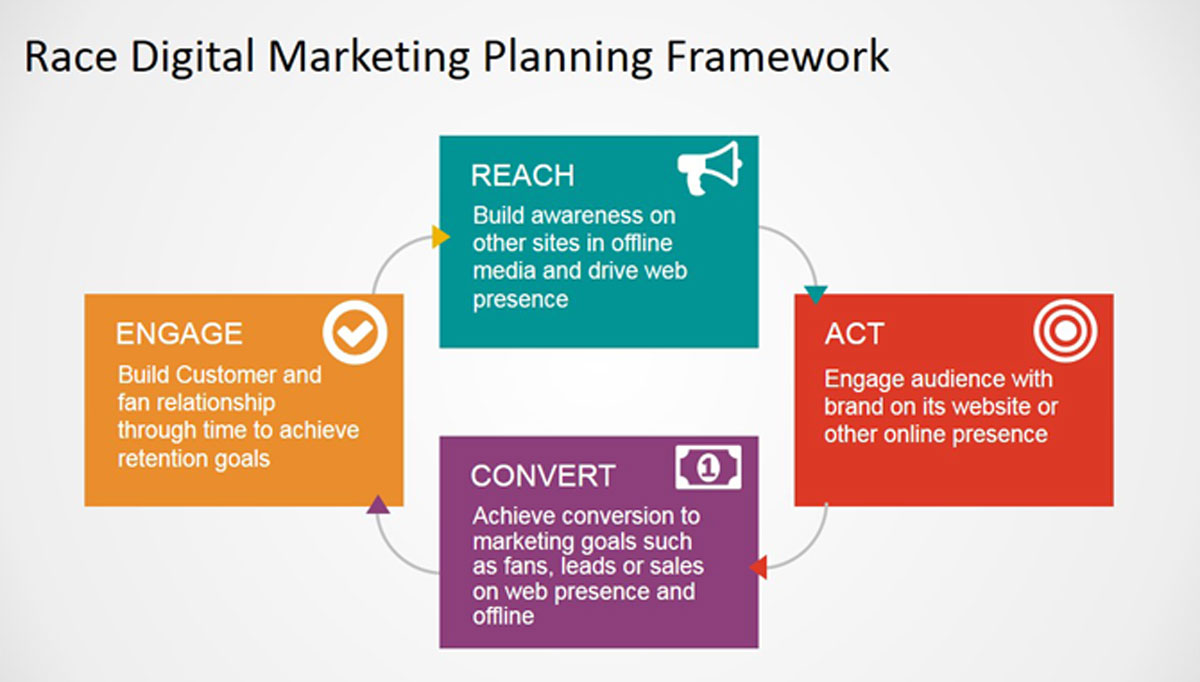
In order to define clear objectives for your Content Marketing is important to map them through the marketing funnel. To strategically follow this approach, we will use the RACE Digital Marketing Planning Framework. The RACE framework covers the main four stages of the customer lifecycle along the marketing funnel. The RACE Acronym states:
- Reach: Awareness, drive visits and presence.
- Act: Engage Audience with brand. Interaction and Visits.
- Convert: Achievement of marketing goals.
- Engage: Build Customer Loyalty.
In each RACE Stage, its necessary to define the objectives and KPIs. For this purpose, we will use the second management tool, the SMART Objectives Goals setting framework.
SMART Objectives

SMART is a management acronym generally used to guide the process of goal settings in different management areas (projects, business, strategies, etc.). When the SMART principles are followed for goal setting, the chances of success increase. The meaning of the SMART Goals acronym is as follows:
- Specific: The goal needs to be as specific as possible. It must be clear, unambiguous. A specific goal is short, crisp, and concise. Specific Goals always answer the 5 “W” questions (What, Why, Who, Where, Which)
- Measurable: If You Can’t Measure It, You Can’t Manage It. Goals need to be quantifiable. Progress towards achievement must be measurable.
- Attainable: Goals need to be possible in a realistic scenario.
- Relevant: Goals need to matter. Managers can choose infinite goals, but only a few will matter.
- Time-bound: The goal needs to be achievable in a time frame that could be planned.
How To Work With the RACE and SMART PowerPoint Templates?
As did with the SWOT template, we will explain how to take advantage of Professional PowerPoint Templates, to guide the users’ strategic thinking through the process in an ordered and structured fashion. The process continues from where it was left, the action plan, and places the RACE framework PowerPoint Template on the board. The Template provides a matrix with 4 rows, each row representing a stage of the customer lifecycle. The analysis team will start placing the different actions in the correct stage of the lifecycle. It will happen in three different scenarios:
- Action will match a specific stage: Great, this is the best scenario.
- Action will match more than one stage: Great too. This is the most common scenario. As a rule of thumb, the team needs to match the most profitable stage in case this happens. This kind of “untie” is part of the general experience. Also, if the Content Marketing is mature enough, the team could start A/B testing over the funnel stage (advanced stuff not covered by this post)
- Action will match no stage: Great too. This means the action is not really “actionable” for your content marketing plan. Return the idea to the previous stage for more “ideation” iterations.

Once your actions are placed along the customer lifecycle, start defining the objectives you want to reach. For this purpose, we will apply the SMART criteria to the first objective as an example.
Let’s consider the action of the creation of the YouTube channel. This action is a driver for Organic Traffic. What is what we want to achieve? We apply the SMART Objectives criteria to this action in the following SMART Goals Template.
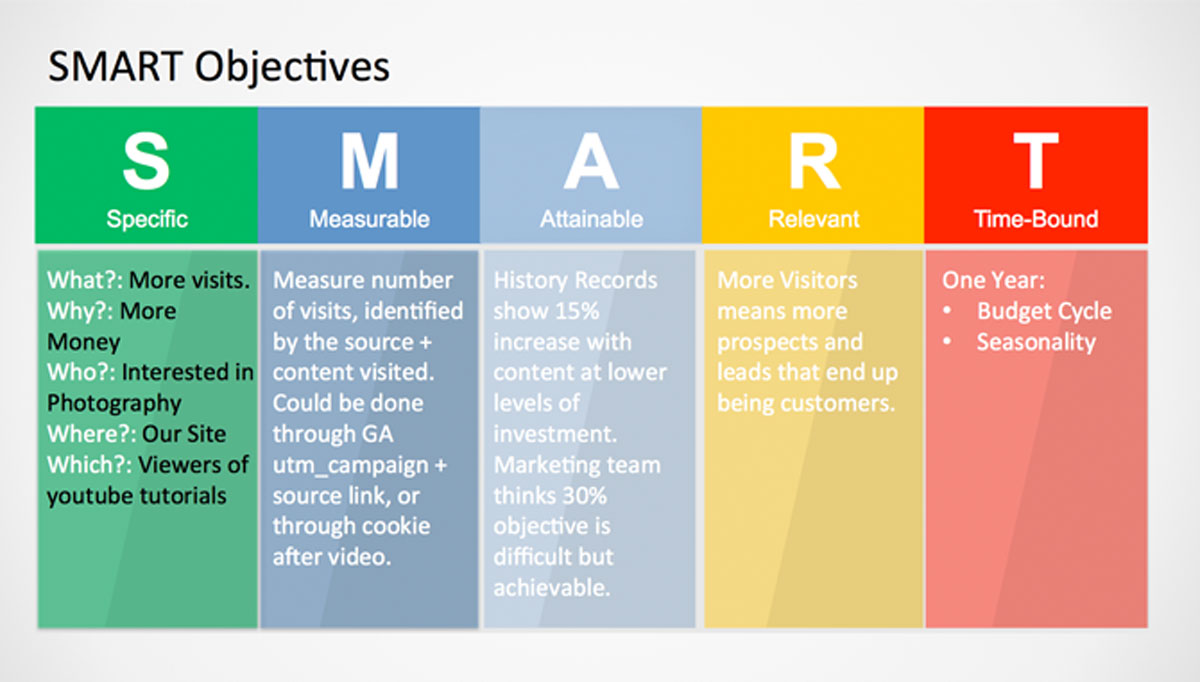
After all our plan actions have a goal, and each goal has been analyzed through the SMART criteria, we complete a snapshot of all the analysis conclusions in a RACE Matrix, where each row represents a stage of the funnel and goals, KPI, and actions are recorded for follow-up.

Assets Analysis with Content Marketing Matrix and Content Marketing Media Matrix
Once the content SWOT analysis is concluded and an actionable plan is in place across the customer lifecycle, it’s important to identify the GAPs between the content assets your organization creates and the content your audience may consume. At this point, you have measurable objectives to achieve. It is time to look into the content specter your audience consumes and identify if you need to adjust your content generation strategy to fill the GAP. In this stage, it is also important to look at the competition and understand its content strategies.
For this purpose, we propose the use of the Content Marketing Matrix and the Content Marketing Media Matrix. These tools are simple four (4) quadrant matrixes that, used together, can provide insightful information on Content Assets GAPs.
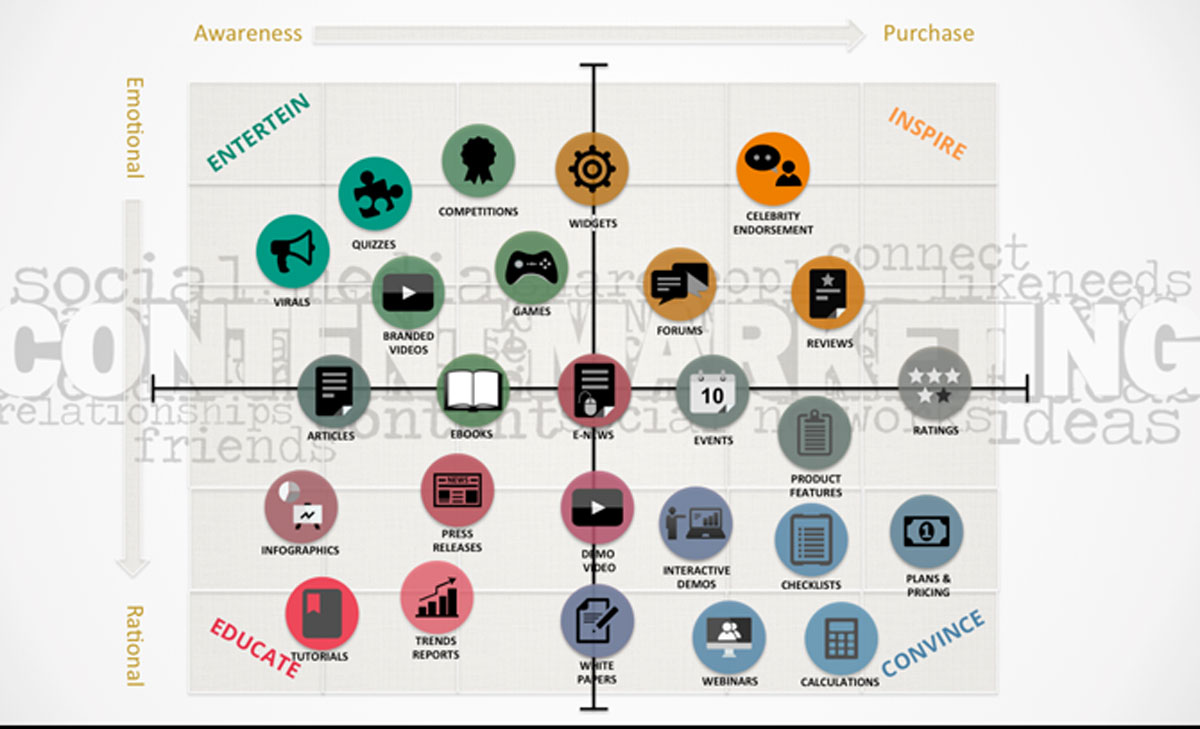
How to Use the Content Marketing Matrix?
The Content Marketing Matrix is a simple tool that aims to generate “quality conversations” between the content creation teams and marketing stakeholders. Information about assets can be organized in a visual perspective that provides insights about their possible effect on the audience and the business.
From left to right, the horizontal axis represents the buying funnel, from awareness to purchase. From top to bottom, the Vertical axis represents the emotional effect that the content tries to generate in the audience, ranging from emotional to rational. The tool places the different content assets across the matrix, analyzing which is the content objective of the marketing organization and the emotion that reflects. During this analysis, the marketers may identify GAPS within the chain of content that should guide the prospect from Awareness into Purchase, swinging within emotions and rationale.
Each Quadrant represents a two-dimensional marketing objective over the emotional axis and lifecycle axis:
- Educate: Create Rational content that will attract the audience through the initial stages of the funnel. The objective is to educate the audience about the subject matter expertise of the product and business industry. Ideal for Tutorials, Trends Reports, Press Releases, and Infographics. This quadrant reflects the organization’s knowledge and the willingness to share it with its digital community.
- Entertain: Create Emotional content to attract the audience through empathy into the initial stages of the funnel. The audience will invest time in these content assets to satisfy their entertainment needs. These assets include viral content over social networks, quizzes within the user base, competitions between the users for an award, and branded videos over Youtube or online games.
- Inspire: Create Emotional content to help the purchasing decision to guide the user from customer to advocate. There are some popular tools like Rytr that could help you create quality content, but these are super expensive. There are some really good Rytr alternatives that could be of great help here. The content assets are generated through interaction with customers. In this quadrant, locate the content assets related to product reviews, grant access to your users’ forum to share the content with the new audience, or find influencers to talk/write about your product/service and generate shareable content with their mentions and endorsements.
- Convince: Create Rational content to complete the purchasing decision. The assets located in this quadrant should help the prospect choose your product/service. Content under these characterizations is product features, checklists, your users’ ratings, interactive demos, or webcasts. Finally, the obligatory content is the Plans and Pricing sheet.
To start using the matrix, you can download SlideModel’s Content Marketing Matrix PowerPoint Template, a 100% editable version of the Content Marketing Matrix, with professional quality Icons that make it easy to copy and paste assets into the Matrix Map in a “post-it” fashion. The process is simple and intuitive. The user selects the content assets icon and drags and drops it over the empty matrix canvas. Iteratively, the users and audience start to relocate the assets over the quadrant covering the funnel. Immediately after the first iteration, the stakeholders will identify the GAPs and will plan for the missing content.
How to Use the Content Marketing Media Matrix?
The Content Marketing Media Matrix is an intuitive tool that helps understand the relative effort of the creation of media assets compared to the relative attention they will generate over the audience. Once the Assets GAP is identified with the Content Marketing Matrix, the team can work with the Media Matrix and prioritize the efforts. As the previous tool, this is a relative comparison that provides guides for insights analysis between involved stakeholders.
The process is simple, just drag and drop the assets over the matrix canvas and position their location in the quadrants according to the effort and attention dimensions. Visually the team will clearly identify which content is a priority and which will not be as effective.

Example of content GAP Analysis
Going back to our example, we put both matrixes into practice to show the final result of the analysis. The business assets of the example organization are focused on the photography and web design industries, and the content to guide the user through the funnel tries to generate a simple rational path. No big branding efforts. The example clearly identified a GAP in the Entertain Quadrant that was analyzed later in the media matrix to define which content assets were going to be created to fill that GAP. The team decided to fill the GAP with Virals through social networks as being the most effortless content that could be generated by reusing existing assets. Even though it will not be the most engaging, the GAP will be covered, and measurable results will show the effect.

Create The Content Marketing Plan Roadmap
After the analysis steps have been completed, the content plan is in place, and the assets required are agreed, it is time to create a realistic timeline. To create the Roadmap, we suggest the use of a Gantt Chart Template. This slide template is suitable for representing tasks, resources, and time in a visual way and is extremely easy to edit through its data-driven nature (you can edit it through Excel). The timeline will contain the tasks involved in content creation and the tasks related to the publishing of each asset in the different digital marketing channels, including social media marketing. You can create one slide per task if you need to sub subdivide the tasks and give a more detailed plan.

Conclusions
In this post, we reviewed a simple analysis process to create a Content Marketing Plan. As a visual tool, several PowerPoint templates served as the canvas for the analysis sessions and for tracing the analysis stages’ outcomes. Also, after the process was complete, all stages were easily presentable, just regrouping the slides we edited on each stage. For extra information on how to present your marketing slides, we recommend reading the essential guide to Marketing Plan presentations.
The process can be summarized in the following steps:
- Study your current Strengths, Weaknesses, Opportunities, and Threats (SWOT).
- Design an actionable set of tasks that tackle the opportunities, leveraging the strengths.
- Design an actionable set of tasks that protects you from Threats and Mitigates your Weaknesses.
- Align the actionable tasks according to the customers’ life cycle (RACE).
- Define SMART Objectives for the tasks across the funnel.
- Identify the Content Assets GAPS with the Content Marketing Matrix.
- Prioritize the Content Assets with the Content Marketing Media Matrix.
- Create a Timeline for your Content Marketing Plan, defining Resources and Durations.


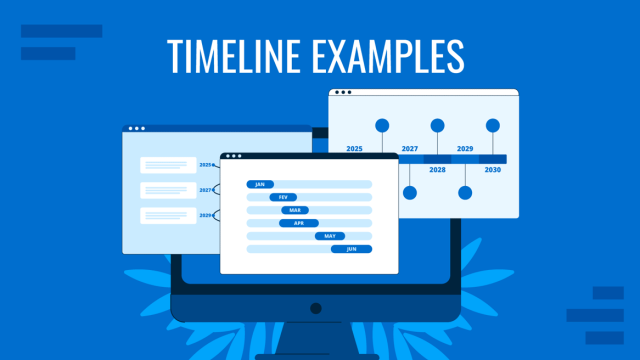
Seriously digital marketing is a vast field to explain and demands a planned, structured approach to get the job done. Reading this article really helped about the new strategies that one can make to optimize the content. Thanks for the detailed summary..
Keep up the good work!